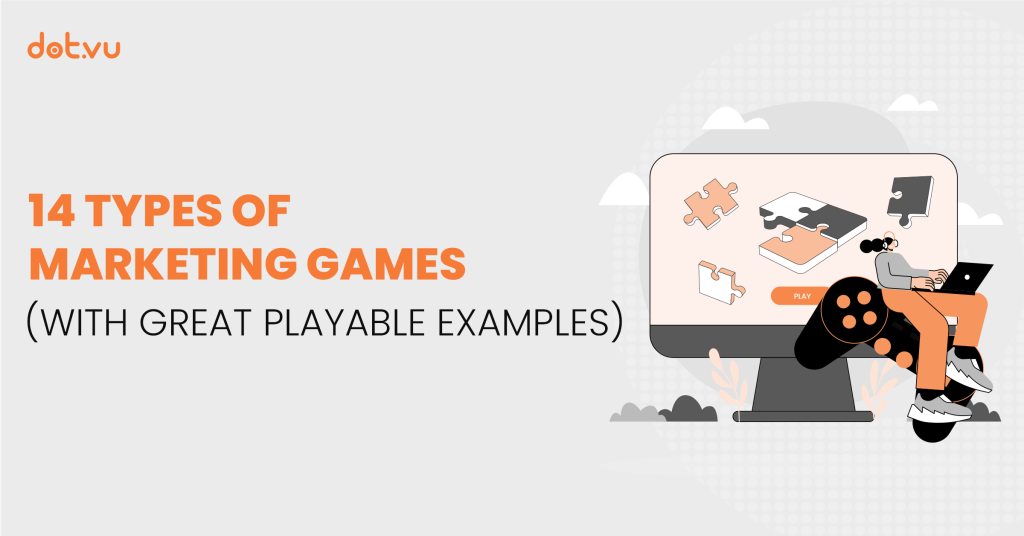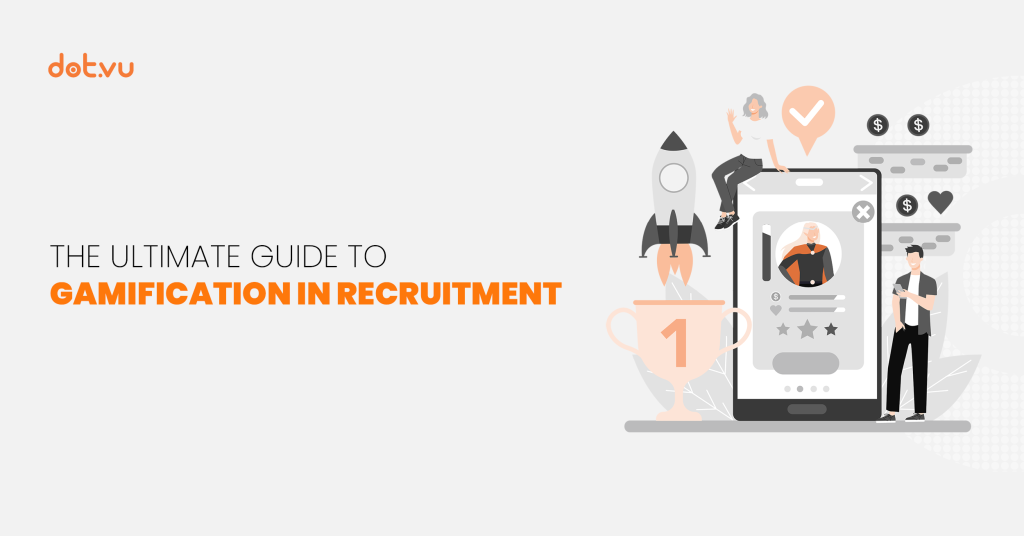
Gamification is a technique that uses game-like elements to engage and motivate people to perform tasks or achieve goals. Studies have found that 78% of people say a gamified recruitment process makes them excited about working for the company. As a result, gamification has become a popular strategy in recruitment for companies looking to attract, assess, and hire top talent.
Traditional recruitment methods, such as job postings, resume screening, and interviews, often fail to capture candidates’ attention and enthusiasm. Many candidates find these processes tedious, time-consuming, and stressful, while employers struggle to identify the right fit among a large pool of applicants. Gamification offers a solution to these challenges by making the recruitment experience more interactive, fun, and informative. By incorporating game-like elements, such as simulations, assessments, and rewards, companies can engage candidates, assess their skills and competencies, and showcase their culture and values.
In this blog post, we will explore the concept of gamification in recruitment and its benefits and challenges. Whether you are a recruiter, a candidate, or an HR professional, this post will offer insights and inspiration on how to leverage gamification in your recruitment strategy. Let’s get started!
Table of contents:

The problem with traditional recruitment methods
Traditional recruitment methods are becoming outdated. One problem is that candidates are not engaged enough. Job postings and resumes don’t always get their attention, and the application process is often too long and complicated. This means fewer people complete it, resulting in fewer quality applications. As a result, there may not be enough good candidates for open positions.
Moreover, traditional recruitment methods are expensive and time-consuming. Recruiters often must sift through many resumes, which takes up valuable time and resources. Additionally, scheduling interviews and conducting them can be a lengthy process, especially if the position requires multiple rounds of interviews.
The use of gamification in recruitment offers a solution to these challenges. Gamification enhances recruitment by making it more interactive and engaging for both candidates and employers. Candidates are more likely to complete the recruitment process if it is fun, informative, and challenging. This leads to higher completion rates, which can result in a larger pool of quality applicants.
What is gamification in recruitment?
Gamification in recruitment is a concept which involves the use of game-like elements to enhance the recruitment experience. These elements can include simulations, assessments, and rewards. By incorporating game-like elements, recruiters can capture the candidate’s attention and engage them in a way that traditional recruitment methods cannot.
Related: What is gamification in marketing?
How is gamification useful for recruitment?
The benefit of using this method is numerous because it uses game elements and mechanics to enhance the recruitment process
Some of the benefits of gamification in recruitment include:
1. Increased engagement:
The recruitment process becomes more engaging for candidates, as it adds an element of fun and challenge to the experience. This can lead to a higher level of interest and participation in the recruitment process.
2. Improved candidate assessment:
Recruiters can assess a candidate’s skills and abilities in a more interactive and meaningful way. For example, recruits can measure a candidate’s problem-solving skills or ability to work in a team with an assessment game. It can also help assess soft skills, personality traits, and cultural fit accurately.
3. Enhanced brand awareness:
An engaging and memorable gamified recruitment process can help to attract more candidates and make the company stand out from competitors. The use of game-like elements can showcase the company’s innovation and creativity, which can lead to a better reputation among job seekers.
4. Cost-effective:
Gamification can be a cost-effective way to attract and assess candidates, as it can reduce the need for expensive assessment centers and recruitment campaigns.
5. Reduced bias:
By providing objective measures of a candidate’s skills and abilities, gamification can help to reduce bias in the recruitment process. This can ensure a fair and equal recruitment process for all candidates.
6. Talent pool expansion:
Using gamification can attract candidates from different backgrounds, skill sets, and age groups, expanding the talent pool and providing a more diverse candidate pool.
7. Improved candidate experience:
By incorporating game-like elements, recruiters can create a more informative recruitment process, which can lead to a better understanding of the company culture and values. This will result in higher completion rates and better-quality applicants.
8. Accurate assessment of soft skills and cultural fit:
The use of simulations and assessments in gamification can provide a better understanding of the candidate’s suitability for the role and the company culture. This can lead to higher retention rates, as candidates are more likely to stay with a company that values innovation and creativity.
Gamification in recruitment examples
Gamification in recruitment can involve various game elements to attract and engage potential candidates. Incorporating game elements into your recruitment process can help assess a candidate’s problem-solving abilities. It can also simulate real-life work scenarios, and test their skills and knowledge in an interactive manner.
By adding an exciting element, gamification can provide valuable insights into a candidate’s abilities and potential fit for the job. So, why not level up your recruitment game with gamification?
Here are a few gamification elements to use in your next recruitment strategy:
1. Interactive Quizzes
Interactive Quizzes are a popular gamification element in recruitment that can help to attract and engage job seekers. These quizzes can take a variety of forms, such as multiple-choice questions or visual puzzles. It can also be designed to test a candidate’s knowledge, skills, or problem-solving abilities.
By incorporating these quizzes into the recruitment process, companies can create a more engaging and Interactive Experience for candidates, while also gathering valuable information about their abilities and potential fit for the role.
Interactive Quizzes can also be used to provide feedback to candidates on their performance, helping to build their confidence and encourage them to continue through the recruitment process.

Related: What is an Interactive Quiz?
2. Personality Tests
Personality Tests are a gamification element that can help companies to better understand a candidate’s personality traits and how they may fit within the company culture. These tests are designed to assess a candidate’s personality characteristics, such as their communication style, leadership abilities, and level of adaptability.
By using this element in the recruitment process, companies can gain a better understanding of a candidate’s fit within the team and organization, ultimately leading to better long-term retention rates and job satisfaction. Personality Tests can also be used to provide insights into a candidate’s strengths and weaknesses, helping to tailor the recruitment process to better suit their needs and abilities.
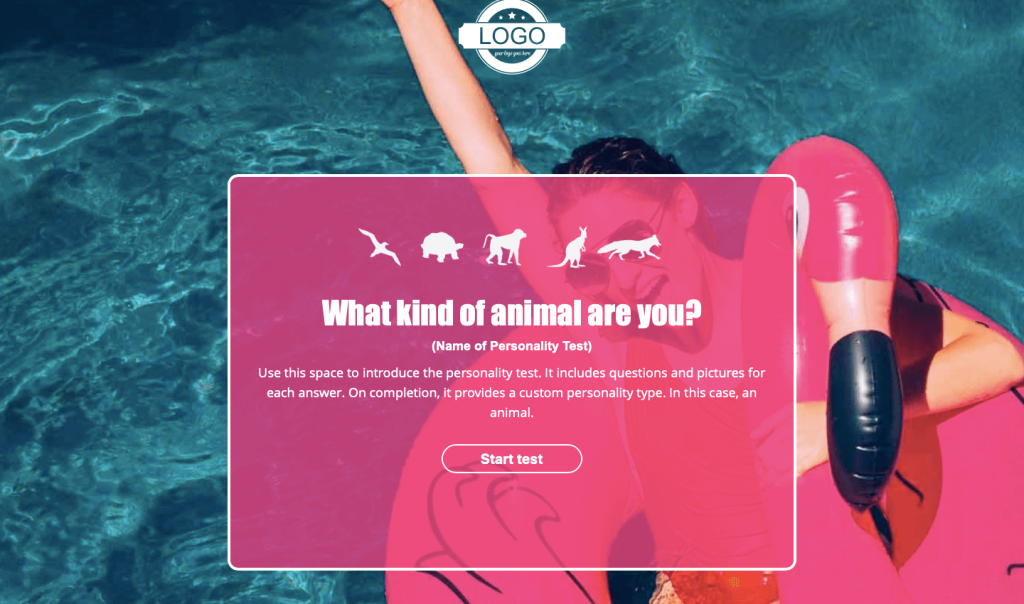
Related: What is an Interactive Personality Test?
3. Interactive Assessments
Interactive Assessments are another gamification element commonly used in recruitment. These tests are designed to evaluate a candidate’s skills and knowledge in specific areas, such as technical skills, critical thinking, or communication abilities.
By using assessment tests, companies can gain a more accurate understanding of a candidate’s capabilities and identify those who are best suited for the role. Assessment tests also provide targeted training for new hires to excel in the role.
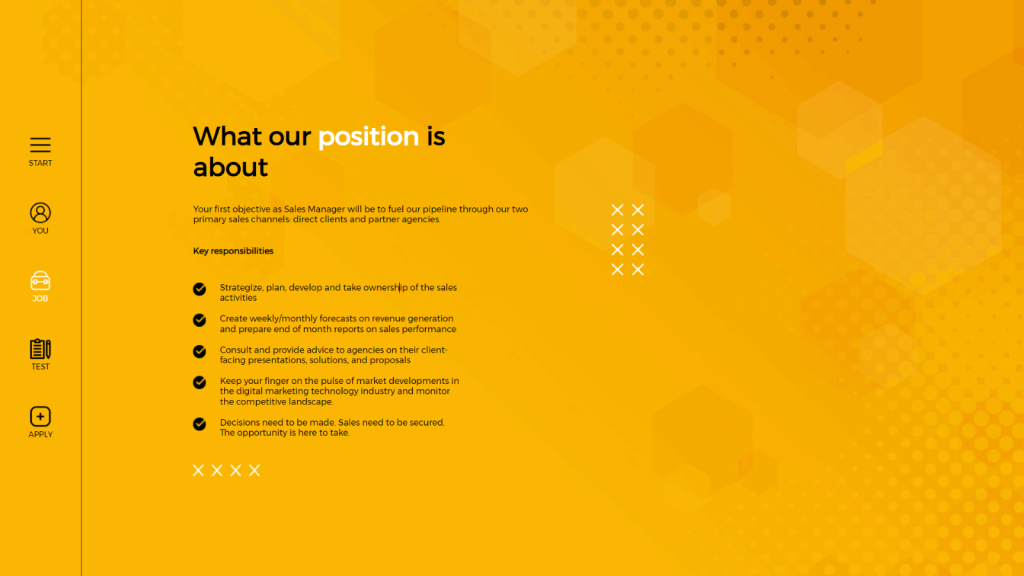
Related: Interactive Assessments: Everything you need to know
4. Interactive Virtual Tour
Interactive Virtual Tours provide an engaging and immersive experience for job seekers during the recruitment process. These tours showcase the company’s offices, facilities, and culture, attracting candidates who want to learn more about the workplace.
Virtual tours also highlight the company’s values and mission, helping to attract candidates who share these values and are a good fit for the organization. Overall, Interactive Virtual Tours can be a powerful tool in gamification in recruitment.
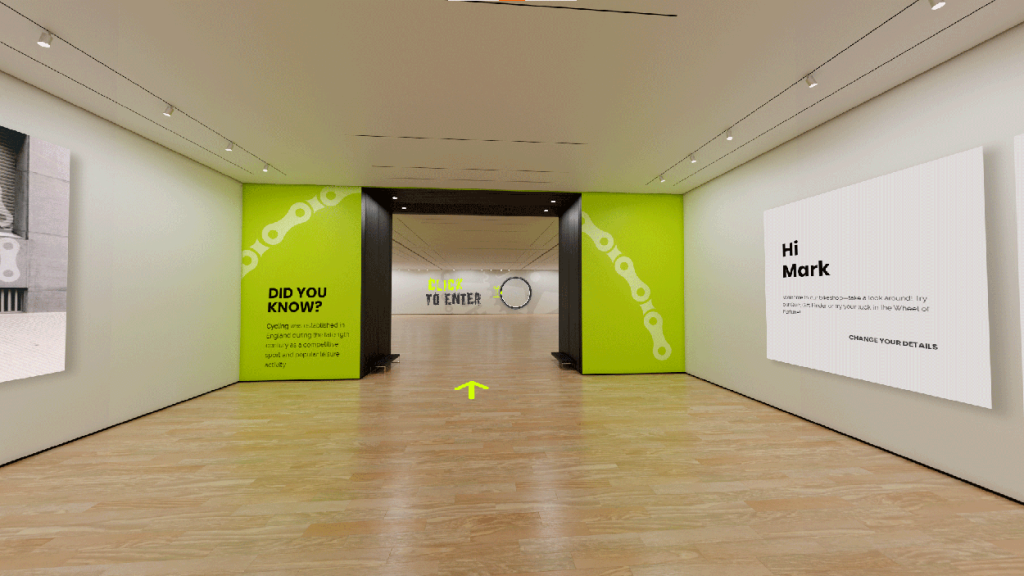
Related: What is an Interactive Virtual Tour?
Challenges of gamification in recruitment
Gamification is a popular recruitment technique due to the advantages it offers. However, like any new technology, it also presents its own set of challenges. Addressing these challenges is crucial for a successful implementation of gamification in recruitment.
Here are some challenges associated with using gamification in recruitment:
1. Ensuring fairness and objectivity
One of the main challenges of using gamification in recruitment is ensuring that assessments and simulations are fair and unbiased. The game design and scoring must be unbiased, and all candidates must be assessed based on the same criteria.
2. Technical issues
Another challenge is the potential for technical issues or glitches. These can negatively impact the candidate’s experience and result in candidates dropping out of the recruitment process. Ensuring thorough testing of the games and assessments is crucial to minimize the risk of technical issues.
3. Investment of time and resources
The use of gamification in recruitment requires a significant investment of time and resources. Creating engaging games and assessments requires specialized skills not always available in-house. Additionally, the implementation and management of gamification requires additional resources, including the technology and personnel to support it.
Gamification in recruiting – try it out for yourself!
Gamification can be a valuable addition to the recruitment process, leading to higher-quality hires and a more engaging and Interactive Experience for candidates. However, recruiters must carefully evaluate whether gamification is the right approach for their recruitment needs.
Remember to take the necessary steps to ensure a fair and objective process that meets the highest standards of inclusivity and accuracy.
Consider using an Interactive Content platform like Dot.vu, which offers a wide range of customizable Marketing Games. With our templates, you can easily tailor your games to match your brand image, making them a perfect fit for any marketing strategy. Let us help you harness the power of gamification and take your marketing to new heights. Sign up for a free account today and try out our customizable templates for your recruitment and marketing strategies.


